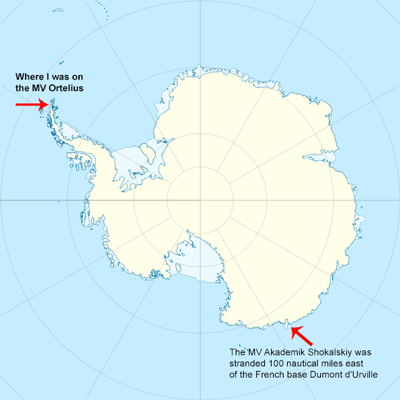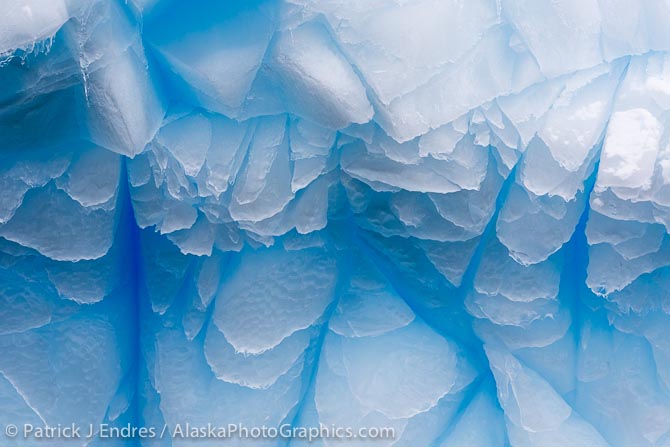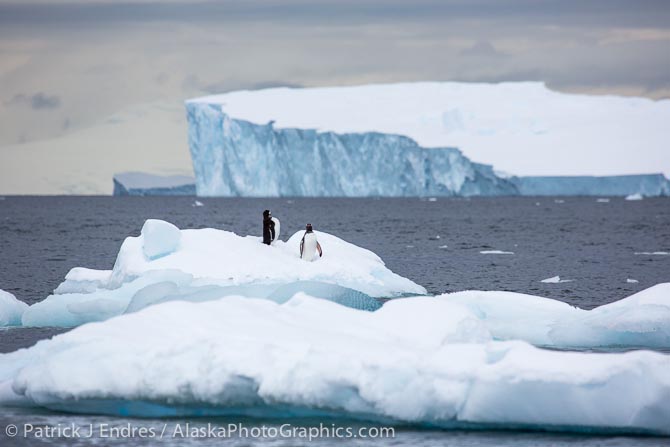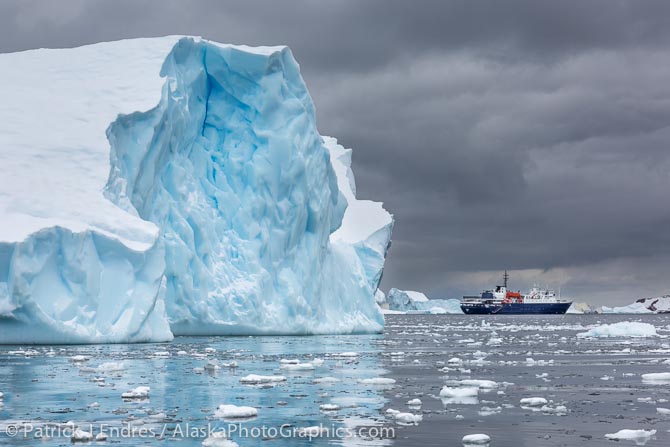 I’m back from a wonderful wilderness experience in the Southern Ocean, where I worked as staff for Cheeseman’s Ecology Safaris on a 30 day expedition voyage to the Falkland and South Georgia Islands, and the Antarctic Peninsula. While I was there, aboard a very ship-worthy Russian Icebreaker named the MV Ortelius, another ship, the Akademik Shokalskiy, got stuck in sea ice in a completely different part of Antarctica and the passengers were eventually rescued by helicopter. I know this made big news in the press, so just for the record, I was not on that vessel. However, our own little ship did its own share of dodging thick packs of ice that forced many itinerary changes. The sea ice moves around considerably based on wind and current conditions and sometimes, pre-planned destinations are not accessible. While the drifting sea ice is responsible for these changes, what most people think about when they think of Antarctica is the giant chunks of ice that calve from the glaciers. These are rarely so thick that they block a ship’s passage, and they are also the most interesting and beautiful. If time had a face, surely it would be seen in the many icebergs that populate the waters of Antarctica. Hundreds and thousands of years that have been layered together and then cracked off to float in chilly waters that etch and refine the lines of time. To move amongst these great shapes is to engage in an experience that leaves one grossly lacking for words. A proper description seems as elusive as it feels ostentatious. Who can get their head around hundreds of thousands of years? When I drive a zodiac around these icebergs, I feel like I’m in a museum, a giant gallery of art, where edges, lines and shapes seem infinitely unique. The deep, deep color of blue in the ice is sometimes so strong, that I swear I can actually feel the color. The intensity of shape and color is also augmented by cracking and popping sounds, lapping waves, and the occasional blow spout of whale. It is an addictive, cold magic spell.
I’m back from a wonderful wilderness experience in the Southern Ocean, where I worked as staff for Cheeseman’s Ecology Safaris on a 30 day expedition voyage to the Falkland and South Georgia Islands, and the Antarctic Peninsula. While I was there, aboard a very ship-worthy Russian Icebreaker named the MV Ortelius, another ship, the Akademik Shokalskiy, got stuck in sea ice in a completely different part of Antarctica and the passengers were eventually rescued by helicopter. I know this made big news in the press, so just for the record, I was not on that vessel. However, our own little ship did its own share of dodging thick packs of ice that forced many itinerary changes. The sea ice moves around considerably based on wind and current conditions and sometimes, pre-planned destinations are not accessible. While the drifting sea ice is responsible for these changes, what most people think about when they think of Antarctica is the giant chunks of ice that calve from the glaciers. These are rarely so thick that they block a ship’s passage, and they are also the most interesting and beautiful. If time had a face, surely it would be seen in the many icebergs that populate the waters of Antarctica. Hundreds and thousands of years that have been layered together and then cracked off to float in chilly waters that etch and refine the lines of time. To move amongst these great shapes is to engage in an experience that leaves one grossly lacking for words. A proper description seems as elusive as it feels ostentatious. Who can get their head around hundreds of thousands of years? When I drive a zodiac around these icebergs, I feel like I’m in a museum, a giant gallery of art, where edges, lines and shapes seem infinitely unique. The deep, deep color of blue in the ice is sometimes so strong, that I swear I can actually feel the color. The intensity of shape and color is also augmented by cracking and popping sounds, lapping waves, and the occasional blow spout of whale. It is an addictive, cold magic spell.

Sculpted Iceberg, Antarctica. Canon 5D Mark III, 24-104mm f/4L IS (75mm) 1/200 sec @ f/14, ISO 200.

Gentoo penguins on iceberg, Antarctica. Canon 5D Mark III, 100-400mm f/4L IS, 1/1600 sec @ f/9, ISO 400

The MV Ortelius.







